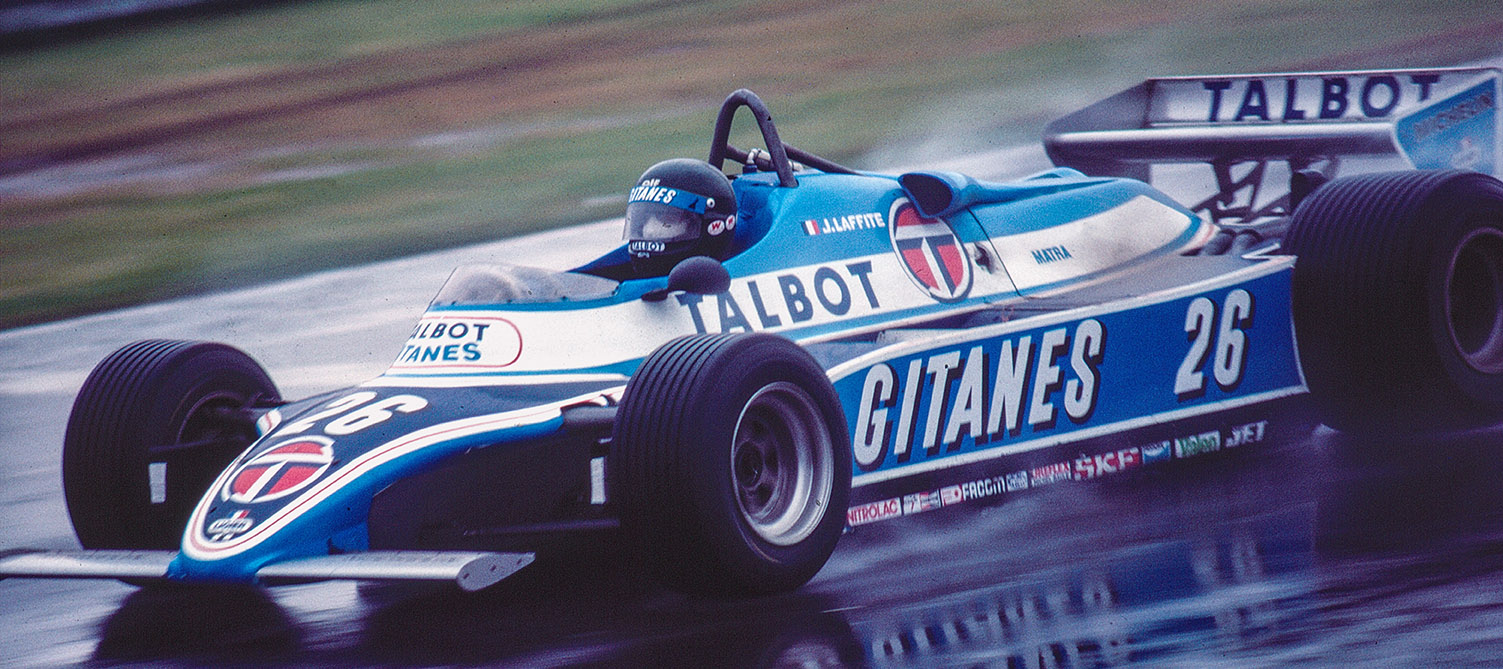
1981 Canada GP: Jacques Laffite’s masterclass in the rain!
On 27th September 1981, 40 years ago, Jacques Laffite at the wheel of the Ligier JS17 won the Canadian Grand Prix after an inspired drive. It was the brand-new Talbot-Ligier-Matra team's second victory after the Austrian GP in August and it opened up the perspective of a possible F1 world championship title. In qualifying things didn't look very promising. The weather was dry and the cars shod with Goodyear tyres seemed to have the upper hand. The no. 26 Ligier JS17 on Michelin rubber could do no better than tenth fastest. But race day would be a very different story!
On Sunday morning, Montréal was hit by a succession of rain storms and the start was given on a soaking wet track. By lap 5 Laffite in his JS17 had fought his way up to fourth and he went on to take the lead 13th time round. The French driver was at his brilliant best and never relinquished first place. He came home to victory followed by John Watson in his Ford Cosworth-engined McLaren leaving local lad Gilles Villeneuve in his Ferrari trailing in his wake.
Jacques recalls: “I won in Canada in the rain because I had Michelin tyres, the Matra engine, which had much less horsepower and torque at low revs that the Ford or the turbos of the time, and a very good car. I had just the right compromise. All the leading places were filled by Michelin-shod cars.”
Add to this winning trio, a brilliant driver who never put a foot wrong during two hours on a bumpy, flooded track! Laffite settled scores for once and for all with those who said he was ill at ease in the rain. “I'd been dragging that reputation around with me since 1975,” he says with a smile. “I was driving for Frank Williams and in the Austrian Grand Prix we were racing in a real deluge. Against Frank's orders I decided to stop on lap 21 when I was in fourteenth place. It was sheer madness to take such useless risks. Frank Williams ended up agreeing that I was right, but it cost me my seat with Tyrrell who broke the contract that I'd just signed for the following year. Ken said: I'm not taking on a driver who gives up in the rain.' So I went to Ligier. Destiny!” That day on the Ile Notre-Dame Laffite took his revenge and scored his sixth Grand Prix victory.
But the dream of “Les Bleus” and their favourite driver was not to be fulfilled in 1981. The reason was down to the fact that the French constructor respected the law to the letter at the start of the season. Unlike a number of teams, in particular those who didn't benefit from the power of a turbo engine, Gérard Ducarouge and Michel Beaujon designed a new JS17 for the modified V12 Matra engine in full compliance with the regulations, which imposed solid skirts and a 6 cm ground clearance measured when the car was stationary. After four grands prix without results, Guy Ligier decided to give the green light. The engineers could “interpret” the regulations in their own way by adopting Citroën hydropneumatic suspension. When stationary the car respected the 6 cm rule, but out on the track it glued itself to the tarmac thanks to the play in the suspension.
It paid off immediately: first podium in the fifth grand prix at Zolder for Laffite and the fledgling Talbot-Ligier-Matra team. Unfortunately, this decision was taken a bit too late. Despite two victories and several podium finishes in the second part of the season, Ligier was never able to make up the ground lost early on. A few weeks later, the 1981 season, the first of the association between the three French makes, ended on the Las Vegas circuit with fourth place for the team in the F1 Constructors' Championship.